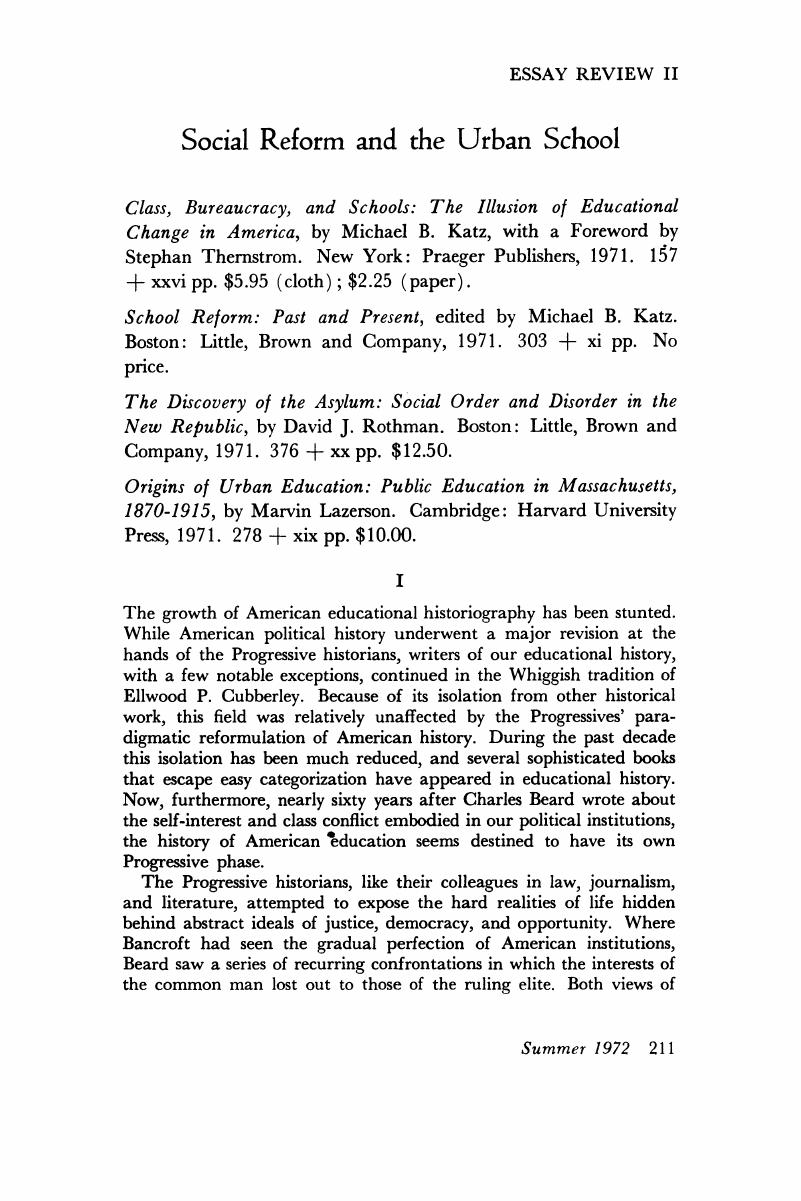Article contents
Social Reform and the Urban School
Published online by Cambridge University Press: 24 February 2017
Abstract

- Type
- Essay Review II
- Information
- Copyright
- Copyright © 1972 by New York University
References
Notes
1. Cubberley, Ellwood P., The History of Education (Boston, 1920), pp. 615–16, 679, 696, 711.Google Scholar
2. Filene, Peter G., “An Obituary for ‘The Progressive Movement,’” American Quarterly 22 (Spring 1970): 34.CrossRefGoogle Scholar
3. See Lynd, Robert S. and Merrall Lynd, Helen, Middletown in Transition: A Study in Cultural Conflicts (New York, 1937), chap. 6; Ware, Caroline F., Greenwich Village, 1920–1930 (New York, 1935), chap. 11, describes the rejection of liberal Progressive practices by the public school staff and parents of Greenwich Village. They were more like Middletowners than Ware's “Villagers.”Google Scholar
4. Diamond, William, “On the Dangers of an Urban Interpretation of History,“ in Historiography and Urbanization: Essays in American History in Honor of W. Stull Holt, ed. Goldman, Eric F., (Baltimore, 1941), pp. 67–108.Google Scholar
5. Grob, Gerald N., The State and the Mentally Ill: A History of Worcester State Hospital in Massachusetts, 1830–1920 (Chapel Hill, 1966), pp. 136–42, 165–86.Google Scholar
6. Thomas, John L., “Romantic Reform in America, 1815–1865,“ American Quarterly 17 (1965): 656–81; Smith, Timothy L., Revivalism and Social Reform in Mid-Nineteenth Century America (Nashville, 1957).CrossRefGoogle Scholar
7. Tönnies, Ferdinand, Community and Society (Gemeinschaft and Gesellschaft), trans, and ed. Loomis, Charles P., (East Lansing, 1957); Wiebe, Robert H., The Search for Order, 1877–1920 (New York, 1967).Google Scholar
- 10
- Cited by


